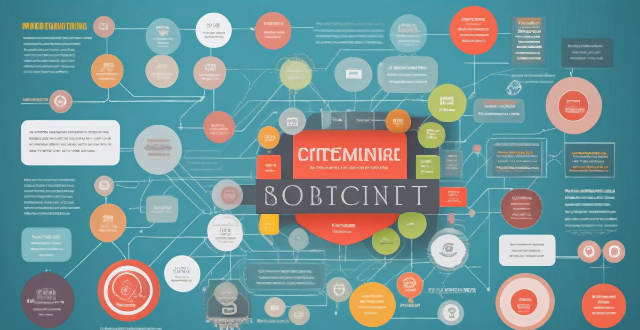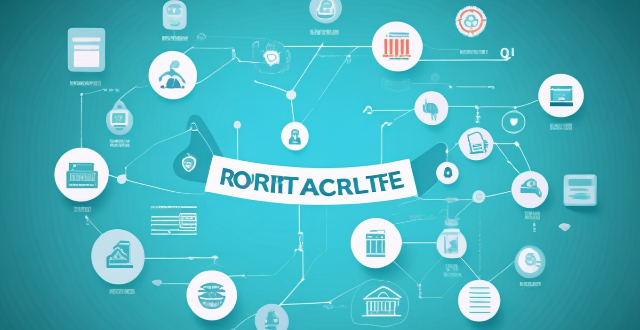Assets Create

How do I create a comprehensive estate plan ?
Creating a comprehensive estate plan is essential to ensure your assets are distributed according to your wishes after you pass away. Here are some steps to help you create a comprehensive estate plan: 1. Determine your goals and objectives, such as who you want to inherit your assets and how you want them distributed. 2. Gather information about all your assets, including real estate, bank accounts, investments, life insurance policies, and personal property. 3. Choose beneficiaries for your assets, including individuals, charities, or trusts. 4. Consider tax implications, such as federal and state estate taxes, gift taxes, and generation-skipping transfer taxes. 5. Create legal documents such as a will, power of attorney, healthcare proxy, and living will to ensure your wishes are carried out in case of incapacity or death. 6. Set up trusts to manage your assets during your lifetime and distribute them after your death. 7. Review and update your plan regularly to ensure it remains current with changes in your life. Working with a qualified professional can help ensure that your estate plan meets your needs and achieves your desired outcomes.

How can I protect my assets from creditors or lawsuits ?
When it comes to protecting your assets from creditors or lawsuits, there are several strategies you can consider. These strategies aim to safeguard your wealth and ensure that you have financial security in case of legal actions against you. Here are some key steps to take: ### 1. **Create a Trust** A trust is a legal entity that allows you to transfer assets into it for the benefit of a third party, known as the beneficiary. By placing your assets into a trust, they are no longer directly owned by you, making them less vulnerable to creditors or lawsuits. There are different types of trusts, such as: - Revocable Living Trust: You can modify or revoke this type of trust during your lifetime. - Irrevocable Trust: Once created, you cannot change or cancel this type of trust. - Special Needs Trust: Designed for individuals with special needs, this trust helps them qualify for government benefits while still having access to funds for other expenses. ### 2. **Establish Limited Liability Entities** Forming limited liability companies (LLCs) or corporations can help protect your personal assets from business-related debts and lawsuits. These entities act as separate legal entities, meaning that their liabilities do not extend to your personal finances. Examples include: - Single Member LLC: Suitable for sole proprietors looking to limit their personal liability. - Multi-Member LLC: Ideal for partnerships where multiple members contribute to the business. - S Corporation: Offers pass-through taxation and limits shareholder liability to their investment in the company. ### 3. **Purchase Insurance** Having adequate insurance coverage is essential in protecting your assets from unexpected events. Make sure you have the following types of insurance policies: - Liability Insurance: Covers damages or injuries caused by you or your property. - Umbrella Policy: Provides additional liability coverage beyond your standard policies. - Homeowner's Insurance: Protects your home and belongings from damage or loss due to various perils. - Auto Insurance: Covers damages and injuries related to vehicle accidents. ### 4. **Diversify Your Assets** Spreading your wealth across different asset classes can help minimize the impact of any single lawsuit or creditor claim. Consider investing in: - Real Estate Investment Trusts (REITs): Allows you to invest in real estate without owning physical property. - Stocks and Bonds: Diversify your portfolio with various securities to reduce risk. - Precious Metals and Cryptocurrencies: Non-traditional assets that may offer protection against market volatility. ### 5. **Consult with Professionals** Before implementing any asset protection strategy, it's crucial to consult with professionals who specialize in this area, such as attorneys, financial advisors, and accountants. They can guide you through the process, ensuring that you comply with all legal requirements and maximize the effectiveness of your chosen strategies.

What is the process for distributing assets after someone dies ?
The process for distributing assets after someone dies is known as probate. It involves filing the will, notifying beneficiaries and heirs, inventorying assets, paying off debts and taxes, and then distributing the remaining assets according to the terms of the will or state law if there is no will. The executor or administrator is responsible for managing the deceased person's estate and all potential beneficiaries and heirs must be notified of their rights and responsibilities.

How do I ensure that my digital assets are handled after my death ?
Managing digital assets after death requires careful planning and regular updates to keep pace with technological changes. This guide outlines steps to take to ensure your online presence is handled according to your wishes, including inventorying assets, choosing a digital executor, including assets in your will, using digital legacy services, setting up access and instructions, and reviewing and updating plans regularly. By following these steps, you can protect your online legacy and provide clarity for your loved ones.

Do I need a lawyer to create an estate plan ?
Estate planning is important for ensuring that your assets are distributed according to your wishes after you pass away. While it is possible to create an estate plan without a lawyer, working with a legal professional can provide numerous benefits such as legal expertise, customized plans, and peace of mind. However, if you have a simple estate with few assets and no complicated family dynamics, creating a basic estate plan using online tools or templates may be sufficient. It is still important to consult with a lawyer to ensure that your plan meets all legal requirements and addresses any potential issues.

What is the difference between a will and a trust ?
The text discusses the differences between wills and trusts in estate planning, highlighting key areas where they diverge. A will is a legal document outlining distribution wishes for assets after death, requiring witnesses and taking effect posthumously. It allows control over assets during one's lifetime and goes through probate, a public process. Wills are flexible and generally less costly to create but offer no tax benefits. Conversely, a trust involves transferring property to a trustee for beneficiaries, with creation and effectiveness varying. Trusts can avoid probate, offering privacy and potential tax benefits but at a higher initial cost and less flexibility, especially if irrevocable. Choosing between them depends on individual needs and preferences.

How can women protect their assets and ensure long-term financial security ?
The article provides a list of strategies that women can employ to ensure their financial security over the long term. These include building an emergency fund, investing in retirement accounts, purchasing life insurance, creating a will, considering long-term care insurance, educating oneself about finance, working with a financial advisor, and prioritizing career development. Each of these steps is crucial in its own way for safeguarding one's assets and ensuring financial stability.

How can I create a quick and delicious snack ?
This article provides a simple guide on how to create a quick and delicious snack using fresh fruits, nuts, yogurt, honey, and cereal. It includes steps for preparation, mixing, and serving the snack. The author encourages readers to experiment with different ingredients and flavors to create their own unique snack.

What is probate, and how can I avoid it ?
This text discusses probate, the legal process of transferring a deceased person's assets to their heirs or beneficiaries. It explains why many choose to avoid probate, which can be time-consuming and costly, and outlines various methods for doing so, such as creating a revocable living trust, joint tenancy with right of survivorship, pay-on-death accounts, transfer-on-death designations, gifting assets during one's lifetime, designating beneficiaries on retirement accounts and life insurance policies, using a will with a probate avoidance clause, and considering state-specific strategies. The text emphasizes the importance of careful planning and consulting professionals to ensure assets are distributed according to one's wishes without court interference.

How do I create a diversified portfolio in the stock market ?
Creating a diversified portfolio is an essential strategy for mitigating risk and maximizing returns in the stock market. Here are some steps to help you create a diversified portfolio: 1. Determine your investment goals, including factors such as your risk tolerance, investment horizon, and financial objectives. 2. Allocate assets across different asset classes, such as stocks, bonds, cash, and other securities. 3. Select securities within each asset class that align with your investment goals and are not highly correlated with each other. 4. Rebalance your portfolio regularly to maintain your desired asset allocation. 5. Monitor the performance of your portfolio and make adjustments if necessary. By following these steps, you can create a well-diversified portfolio that aligns with your investment goals and helps you achieve long-term financial success.

How do DeFi tokens work ?
Decentralized Finance (DeFi) tokens are digital assets operating on blockchain technology, designed to facilitate financial transactions without intermediaries. These tokens can represent various assets like currencies, commodities, and cryptocurrencies. Key features of DeFi tokens include decentralization, smart contracts, and interoperability. They work through token issuance, utility within their respective projects or platforms, and governance mechanisms allowing holders to vote on important decisions related to the project's development. Benefits of DeFi tokens include accessibility, transparency, and innovation in financial products and services.

What documents are typically included in an estate plan ?
An estate plan is a collection of legal documents that outline how an individual's assets and property will be distributed after their death. These documents can include various types of legal instruments, each serving a specific purpose in the estate planning process. Here are some of the most common documents included in an estate plan: - Last Will and Testament: A legal document that states how a person's property and assets will be distributed after their death. - Durable Power of Attorney: A legal document that grants authority to another individual (agent) to act on behalf of the principal in financial matters. - Healthcare Power of Attorney: A legal document that designates someone to make healthcare decisions on behalf of the principal if they are unable to do so. - Living Will: A document that provides instructions about your wishes for medical treatment and end-of-life care. - Trusts: A legal entity that holds and manages assets for the benefit of one or more individuals (beneficiaries). - Beneficiary Designations: The process of naming who receives the proceeds of a bank account, retirement account, or life insurance policy upon the account holder's death. - Letter of Intent: A non-legal document that provides additional information about personal wishes, sentimental items, and instructions for final arrangements.

How do I create an effective study plan ?
Creating an effective study plan is crucial for academic success. Here are some steps to help you create a successful study plan: 1. Set clear goals that are specific, measurable, achievable, relevant, and time-bound (SMART). 2. Assess your time and determine how much you can realistically dedicate to studying each day/week. 3. Allocate time for each subject based on difficulty level and proficiency. 4. Create a schedule using a calendar or planner and stick to it as much as possible. 5. Incorporate short breaks during study sessions to avoid burnout and maintain focus. 6. Regularly review progress and adjust the study plan accordingly. 7. Eliminate distractions by finding a quiet place to study and turning off unnecessary devices. 8. Stay motivated by reminding yourself of goals and celebrating small achievements. 9. Seek help when needed from teachers, tutors, or classmates. By following these steps, you can create an effective study plan that will help you achieve academic success while managing your time efficiently. Remember to stay flexible and adjust your plan as needed to accommodate changes in your schedule or priorities.

How do you create engaging and effective digital ads ?
Creating engaging and effective digital ads is crucial for businesses to stand out in the crowded online space. Here are some tips on how to create compelling digital ads: 1. Know Your Audience: Research your target audience's preferences, behaviors, and pain points to create buyer personas that represent your ideal customers. 2. Clear and Concise Messaging: Clearly communicate the unique value proposition of your product or service, highlight the benefits, and include a clear and compelling call to action (CTA). 3. Visual Appeal: Use high-quality images that resonate with your target audience, maintain consistent branding, and consider incorporating video content for better engagement. 4. A/B Testing: Create multiple versions of your ad with different elements, track key performance indicators (KPIs), and optimize your ad based on the best-performing variations. 5. Social Proof: Include customer testimonials or reviews, share case studies, and collaborate with influencers to build trust and credibility. 6. Mobile Optimization: Ensure that your ad is optimized for mobile devices, minimize load time, and make sure CTAs are easily clickable on smaller screens. By following these strategies, you can create digital ads that not only capture attention but also drive conversions and achieve your marketing goals.

How can I create an effective weekly shopping list ?
Creating a weekly shopping list requires planning, organization, and attention to detail. Here are some steps to help you create an effective weekly shopping list: 1. Plan your meals for the week. 2. Check your pantry and fridge to see what items you already have on hand. 3. Make a master list of all the items you typically buy. 4. Categorize your list into sections such as produce, meat/poultry, dairy, frozen foods, and non-perishables. 5. Prioritize your list based on importance and expiration date. 6. Use technology to help you create and manage your shopping list. 7. Review and update your list after completing your weekly shopping. By following these steps, you can save time, money, and stress while ensuring that you have everything you need for the week ahead.

How do I create a budget for a special project at work ?
Creating a budget for a special project at work requires careful planning and consideration of various factors. Here are some steps to help you create an effective budget: 1. Define the project scope, including goals, objectives, and deliverables. 2. Identify all resources needed, such as personnel, equipment, software, and materials. 3. Estimate costs associated with each resource, including direct and indirect costs. 4. Determine funding sources and how much funding is available. 5. Create a timeline with key milestones and deadlines. 6. Assign responsibilities for managing different aspects of the budget. 7. Regularly monitor progress and adjust the budget as needed.

How can I create an environment that encourages creative expression ?
Creating an environment that encourages creative expression is essential for fostering innovation, personal growth, and problem-solving skills. Here are some tips on how to create such an environment: 1. Set the tone by making everyone feel comfortable sharing their ideas and opinions without fear of judgment or criticism. 2. Provide opportunities for self-expression through various forms of media, such as writing, drawing, music, or dance. 3. Foster collaboration by encouraging teamwork and brainstorming sessions where everyone feels valued and heard. 4. Create a safe space where people feel comfortable taking risks and making mistakes. 5. Offer incentives and recognition to motivate individuals to continue exploring their imagination. 6. Provide resources and tools that support creative expression, such as art supplies, software, or access to workshops and training programs. 7. Encourage time for reflection and inspiration by providing regular breaks, mindfulness exercises, or a quiet space for contemplation. 8. Promote diversity and inclusion to encourage different perspectives and ideas, leading to more creative solutions.

How can I create an effective study schedule for exams ?
Creating an effective study schedule for exams is crucial for academic success. To create a study plan that works for you, follow these steps: 1. Identify your goals and prioritize your study time effectively. 2. Assess your time availability and be realistic about the amount of time you can dedicate to studying without sacrificing other important aspects of your life. 3. Break down the material into smaller sections or topics and map out when you will study each topic using a planner or calendar. 4. Create a study schedule based on your goals, time availability, and material breakdown. Allocate enough time for each topic, schedule regular breaks, incorporate different study techniques, and be flexible with your schedule. 5. Stick to your schedule as much as possible and use reminders or alarms to help you stay on track. 6. Periodically evaluate your progress and adjust your study schedule accordingly. By following these steps, you can maximize your chances of achieving academic success while minimizing stress and anxiety during exams.

How is artificial intelligence being used to create new forms of entertainment ?
Artificial intelligence (AI) is revolutionizing the entertainment industry by creating new forms of entertainment that were not possible before. AI has enabled the development of personalized and interactive experiences that engage audiences in ways never seen before. Here are some examples of how AI is being used to create new forms of entertainment: 1. Personalization: AI algorithms are being used to personalize entertainment content for individual users. For example, streaming services like Netflix and Amazon Prime use AI to recommend movies and TV shows based on a user's viewing history and preferences. 2. Interactive Experiences: AI-powered virtual assistants and chatbots are being used to create interactive experiences that allow users to engage with entertainment content in new ways. For example, the game "Detroit: Become Human" uses an AI-powered system to allow players to interact with characters in the game in a natural and realistic way. 3. Content Creation: AI is also being used to create new forms of entertainment content. For example, AI-generated music and art are becoming increasingly popular. AI algorithms can analyze existing music and art to create new pieces that are unique and original. 4. Gaming: AI is being used to enhance gaming experiences by creating more realistic and challenging gameplay. For example, AI-powered non-player characters (NPCs) can behave more realistically and adapt to a player's actions, making the game more engaging and challenging. 5. Virtual Reality and Augmented Reality: AI is being used to create more immersive virtual reality (VR) and augmented reality (AR) experiences. For example, AI algorithms can track a user's movements and adjust the VR or AR environment in real-time to create a more realistic and engaging experience. In conclusion, AI is being used to create new forms of entertainment that are more personalized, interactive, and engaging than ever before. From personalized recommendations to AI-generated content, the possibilities for AI in the entertainment industry are endless. As AI technology continues to evolve, we can expect even more innovative and exciting forms of entertainment to emerge.

How can educational game developers create engaging and interactive games without sacrificing educational content ?
Educational game developers can create engaging and interactive games without sacrificing educational content by focusing on clear objectives, gamification techniques, feedback mechanisms, collaborative features, and customization options. These key aspects can help developers create experiences that are both fun and educational for players of all ages.

How can organizations create a culture of risk awareness among employees ?
Organizations can create a culture of risk awareness among employees by implementing strategies such as leadership buy-in, training and education, open communication channels, integrating risk management into daily operations, recognizing and rewarding risk awareness, and continuous improvement. These efforts will help employees proactively identify, assess, and manage risks more effectively.

How do you create a successful digital marketing strategy ?
Creating a successful digital marketing strategy involves defining goals, identifying the target audience, conducting market research, selecting appropriate channels, developing engaging content, optimizing for conversions, and measuring results. It requires careful planning, execution, and continuous optimization based on data analysis to effectively reach and engage the target audience online.

Why is it important to have an estate plan ?
Having an estate plan is crucial for ensuring your wishes are honored, minimizing family disputes, and providing clarity on handling affairs.

How can I get started with decentralized finance ?
Topic Summary: The text provides an overview of Decentralized Finance (DeFi) and its benefits, such as transparency, accessibility, efficiency, and innovation. It outlines steps for getting started with DeFi, including self-education on cryptocurrencies and blockchain, setting up a crypto wallet, acquiring cryptocurrency, connecting to a DeFi platform, exploring DeFi services like lending, borrowing, liquidity providing, yield farming, and tokenization, and practicing safe DeFi habits. The text emphasizes the importance of risk management, security, and continuous learning in navigating the evolving world of DeFi.

How can smart contracts be used to streamline financial transactions ?
Smart contracts can streamline financial transactions by automating processes, reducing costs, and increasing efficiency. They can automate payments and transfers, act as escrow services, create loan agreements, streamline insurance claims, and facilitate trading and exchanges of financial assets. As blockchain technology evolves, we can expect more innovative uses for smart contracts in the financial industry.

What are the potential economic benefits of investing in climate adaptation ?
Investing in climate adaptation can bring about several potential economic benefits, including reduced costs of disaster response and recovery, increased resilience of infrastructure and assets, enhanced productivity and efficiency, new business opportunities, and improved health outcomes. These benefits make it an essential component of any comprehensive strategy for addressing climate change and its impacts on our economy and society.

How do I sell my cryptocurrency ?
This guide provides a step-by-step process for selling cryptocurrency, emphasizing the importance of security, fees, user interface, and supported currencies. It outlines steps such as choosing a reputable exchange or trading platform, creating an account, verifying identity, linking a payment method, transferring crypto to the exchange, placing a sell order, confirming the trade, and securing assets. The text also includes tips on tax implications and consulting a financial advisor.

How do I create an Apple ID ?
Create an Apple ID to access services like the App Store, Apple Music, iCloud and more.

How can I protect my growing wealth from market fluctuations ?
Market fluctuations are a natural part of any investment journey. However, as your wealth grows, it becomes increasingly important to implement strategies that can help protect your assets from the ups and downs of the market. Here's how you can do it: - Diversify Your Portfolio - Use Hedging Strategies - Stay Updated on Economic Indicators - Regularly Review and Rebalance Your Portfolio - Work with Financial Advisors

How can I improve my productivity by managing my time better ?
Managing your time effectively is crucial for improving productivity. Here are some tips on how to do so: Create a To-Do List - Prioritize Tasks - Break Down Larger Tasks Use Time Management Techniques - Pomodoro Technique - Time Blocking Eliminate Distractions - Turn Off Notifications - Create a Distraction-Free Environment Take Breaks and Rest - Schedule Breaks - Get Enough Sleep Learn to Say No - Set Boundaries - Delegate Tasks